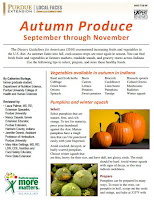Purdue University entomologist Clifford Sadof said early detection is the best way to contain the pest and minimize the risk to healthy trees. "For ALB, the only tool we have is to eradicate the hosts," Sadof said. "No one wants to see apparently healthy trees cut down but the reality is that once the ALB is there, those trees are already dead."
Trees at risk of Asian longhorned beetle infestation include maple, birch, elm, willow, ash and poplar. Identifying ALB early means fewer trees would have to be removed, he said.
"The sooner we find it, the smaller the area that could be affected," Sadof said. "The best way to protect our trees is by looking at them and reporting any suspicious signs. It takes just a few minutes to look around and it could save a lot of trees."
The Asian longhorned beetle originated in Asia and has no natural enemies in the Midwest. Infestations have been reported in Chicago and Cincinnati, putting Indiana squarely in the at-risk zone, Sadof said. He cautioned that the potential damage caused by Asian longhorned beetles is even greater than the risk posed by the emerald ash borer.
"That's because the Asian longhorned beetle can affect a greater variety and greater number of trees," Sadof said.
The Asian longhorned beetle is easy to recognize, Sadof said. Distinctive markings include:
* A shiny black body about 1-1 1/2 inches long with white spots.
* Long antennae with black and white bands.
* Six legs with bluish feet.
Signs of Asian longhorned beetle infestation are:
* Round exit holes, the size of a dime or smaller, in tree trunks and branches.
* Round or oval scars in the bark.
* Sawdust-like material on the ground near the tree or in branches.
* Dead branches or limbs falling from an otherwise healthy looking tree.
Residents who detect any of these signs should contact the Indiana Department of Natural Resources toll-free hotline, 1-866-663-9684 (1-886-NO EXOTIC). They can also download the Purdue Tree Doctor app for their mobile devices.
"The app provides photos that homeowners and professionals can use to identify both the Asian longhorned beetle and emerald ash borer," Sadof said.
Writer: Darrin Pack
Source: Clifford Sadof
Agricultural Communications: Keith Robinson


